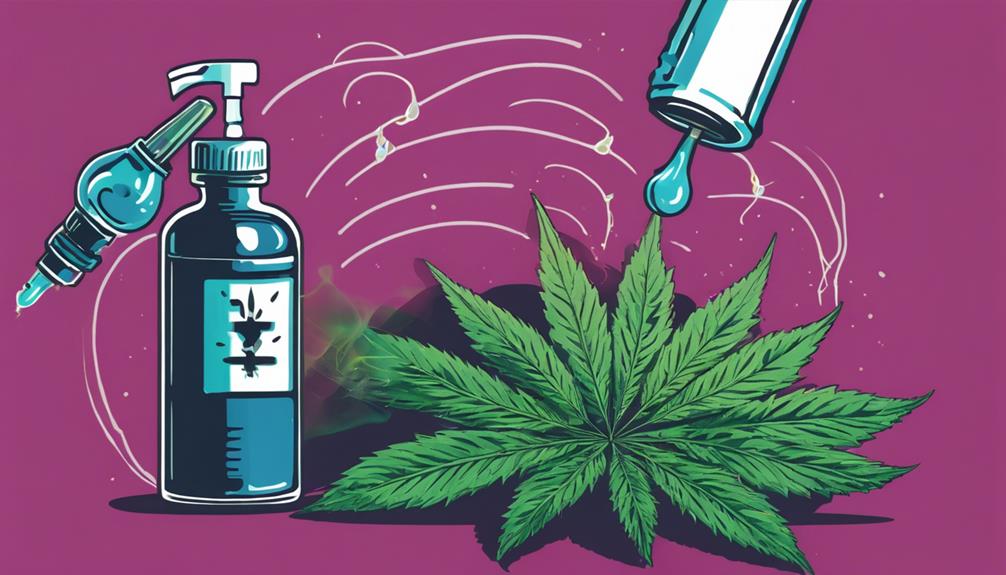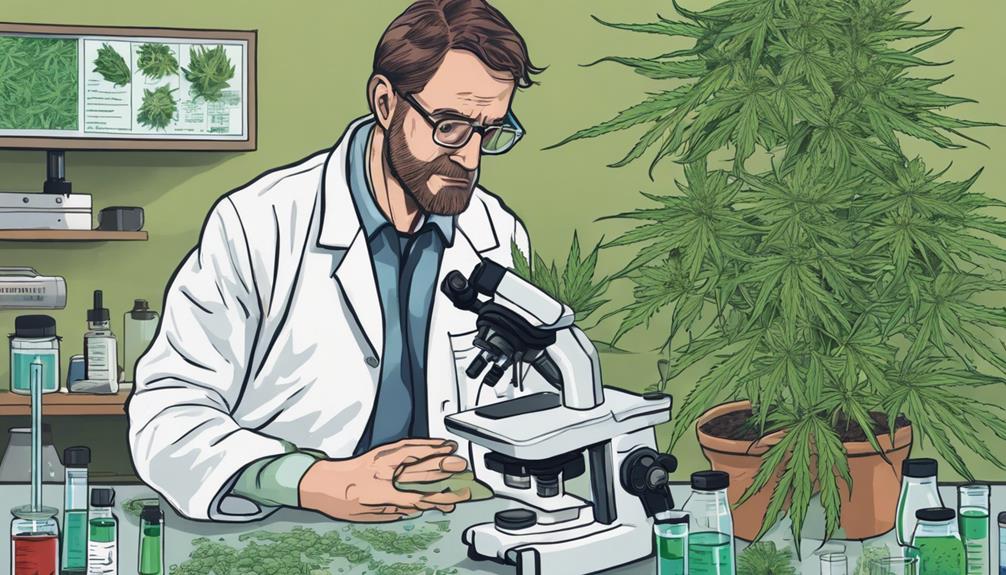Imagine your child suffering from severe epilepsy with no effective treatment in sight. You’ve heard about the success of medical marijuana in alleviating seizures, but you can’t access these products because they’re not available for recreational use. The question that arises then is, how do you navigate this complex landscape for the sake of your child’s health? This issue is far from straightforward and requires a thoughtful exploration of the intersection between medical necessity, legality, and accessibility. Let’s delve into this knotty problem.
Understanding Epilepsy

Epilepsy is a neurological disorder characterized by recurrent seizures. However, it’s more complex than that. Seizures are disturbances in the electrical activity of your brain and can manifest in various ways. Some people experience convulsions; others may simply stare blankly, while some might lose consciousness.
Seizure triggers are specific to each person. Emotional stress, lack of sleep, alcohol or even certain foods can provoke a seizure in some people. Recognizing and avoiding these triggers can help manage epilepsy but it’s not a foolproof solution.
Epilepsy misconceptions abound creating obstacles for those seeking to serve individuals with this condition. It’s not contagious; it’s not a mental illness and certainly doesn’t mean you’re any less capable than someone without epilepsy.
Understanding epilepsy is the first step towards empathizing with and serving those who live with it daily. Discarding misconceptions, recognizing the variety of seizure triggers and acknowledging the complexity of this condition can equip you to make a meaningful difference in the lives of those affected by epilepsy.
Traditional Epilepsy Treatments
Numerous treatments exist for managing epilepsy, with varying degrees of effectiveness depending on individual factors. Primarily, pharmaceutical interventions dominate this field. These anti-seizure medications, while effective in many cases, often come with a range of potential side effects.
That’s why alternative therapies are increasingly garnering attention. They aren’t designed to replace traditional treatments but to supplement them. Cognitive behavioral therapy, for instance, can help you cope with the emotional and psychological challenges epilepsy can present. Acupuncture and biofeedback may also offer some individuals relief.
Dietary approaches like the ketogenic diet have shown promise too. High in fat and low in carbs, this diet alters the way your body fuels itself which can reduce seizure frequency in some people. There’s also the modified Atkins diet which is less restrictive but can still be beneficial.
In your quest to serve others it’s important to remember that epilepsy is a complex condition. What works for one person may not work for another so it’s vital to work closely with healthcare providers to tailor a treatment plan that considers all possible avenues including those outside the scope of traditional medicine.
Medical Marijuana: An Overview

A growing body of research suggests that medical marijuana could be a potent tool in the fight against epilepsy. This plant-based remedy rich in compounds like cannabidiol (CBD) and tetrahydrocannabinol (THC) may influence the brain’s electrical activity potentially suppressing the erratic signals that cause seizures.
However, it’s not just about potential benefits. You need to take into account the side effects. Like any medication, medical marijuana isn’t without its risks. Common side effects include fatigue, dizziness and changes in appetite or mood. More serious side effects can occur particularly with high doses or prolonged use. It’s vital to understand these risks before starting any new treatment.
Dosage recommendations can vary widely depending on factors like your body weight, overall health and the severity of your epilepsy. Because medical marijuana’s effects can be potent it’s important to start with a low dose and gradually increase it under the supervision of a healthcare professional. This approach can help minimize side effects while maximizing potential benefits. Remember, the goal is to find a balance that works best for your unique situation.
This overview should serve as a starting point in understanding medical marijuana’s role in epilepsy treatment.
Marijuana Products for Epilepsy
Exploring the landscape of marijuana products for epilepsy can seem like a challenging task but with careful analysis and a systematic approach you can understand how these products might serve your patients.
The first aspect you need to evaluate is dosage. It’s important to remember that each patient’s needs are unique and what works for one may not work for another. Start with a low dose and gradually increase until you find an amount that alleviates seizures without causing discomfort or other adverse effects.
Speaking of side effects although marijuana is generally well-tolerated it’s not without potential issues. Some patients might experience drowsiness, dizziness and changes in appetite or mood. It’s your responsibility to monitor these side effects and adjust the treatment plan accordingly.
Also keep in mind that not all marijuana products are created equal. The effectiveness of treatment may vary based on the concentration of active compounds such as THC and CBD in the product. Hence it’s essential to choose a product sourced from a reputable manufacturer ensuring its quality, purity and consistency.
Clinical Studies and Evidence

Delving into the field of clinical studies and evidence we find a growing body of research supporting the use of medical marijuana in epilepsy treatment. Research findings from in-depth studies have shown promising results. Clinical trials have demonstrated a significant reduction in the frequency of seizures among patients treated with cannabis-based medicines compared to those receiving a placebo.
However not all results have been positive sparking an efficacy debate within the medical community. Some studies report minimal improvement or even an increase in seizures in a small percentage of patients highlighting the need for further investigation. It’s also important to note that these studies primarily focus on treatment-resistant epilepsy and results may not apply universally.
Moreover, the complex nature of epilepsy with its myriad forms and underlying causes complicates the picture. The efficacy of medical marijuana may depend on specific epilepsy types or individual patient characteristics an area needing more research.
Legal Aspects of Medical Marijuana
The potential benefits and limitations of medical marijuana in treating epilepsy are key parts of this discussion but it’s equally important to contemplate its legal implications. You must navigate through a maze of legal regulations that vary significantly from one jurisdiction to another. The tension between state and federal laws in the United States for instance presents a complex landscape.
The legal regulations directly influence patient access to medical marijuana. In some regions you may find a well-structured system that allows for the prescription, dispensation and use of medical marijuana in treating epilepsy. However in other jurisdictions the legal restrictions may be so rigorous that they effectively deny patients access to this potential treatment option.
Moreover, the legal status of medical marijuana impacts research. If the law classifies marijuana as a Schedule I drug it’s difficult to conduct detailed large-scale clinical trials. This hampers our understanding of the full potential and limitations of medical marijuana in treating epilepsy. For those of you in the medical field these legal considerations shape your capability to serve your patients effectively.
Patient Experiences and Case Studies

Case studies and personal narratives can offer enlightening insights into the effectiveness of medical marijuana for epilepsy treatment. You’ll find patient testimonials and personal stories that point to a noticeable decrease in seizure frequency and severity often when conventional treatments haven’t succeeded.
Consider for example a case study involving a young boy with Dravet syndrome, a severe form of epilepsy. After years of unsuccessful trials with various anti-seizure medications his family turned to medical marijuana. With regular use his seizure count dropped dramatically enhancing his quality of life.
In another scenario, a woman with adult-onset epilepsy shared her experience. Traditional medications caused her severe side effects and she still experienced multiple seizures weekly. After starting a regimen of medical marijuana her seizures decreased significantly and she reported fewer side effects.
Such stories underline the potential benefits of medical marijuana in epilepsy treatment however it’s vital to understand that these are individual experiences. While promising they don’t guarantee similar outcomes for every patient. Further clinical studies are needed to definitively understand the effectiveness and safety of medical marijuana in epilepsy treatment.
Conclusion
You’re in the eye of the storm, sailing through epilepsy’s tumultuous seas. Traditional treatments are your anchor but medical marijuana could be your guiding star. Yet it’s veiled by legal clouds and availability issues. We must rally, fuel more research and advocate for easier access. The potential for medical marijuana to be a beacon of hope for those with epilepsy is too potent to ignore. Let’s shine a light on this alternative pathway and sail through epilepsy’s storm together.
We extend a warm invitation to you, dear reader, to visit us at Fells Point Cannabis Docs of Maryland. Our experienced team is ready to provide you with more information and guide you through the process. We’re here to help you navigate the storm. Don’t hesitate to drop by or give us a call at (410) 401-4200. We look forward to walking this journey with you as we explore this exciting alternative together.
